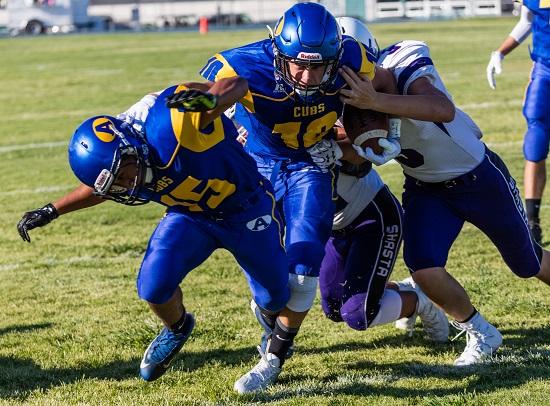

The California Department of Public Health has released guidelines that sideline many popular sports until January 25, in light of surging infection rates.
The state has developed a four-tier system that tracks the number of COVID cases in counties. Caseloads are classified in these tiers of decreasing severity as follows: Widespread Tier, indicating the highest number of cases (Purple); Substantial Tier (Red), is just below this, followed by Moderate Tier (Orange); and Minimal Tier (Yellow).
Sports are also classified, and depending upon the setting of the event, the format of the sport and the amount of contact, are acceptable for play in specific areas. For example, outdoor low-contact sports such as archery, cornhole, cross country, tennis, skiing and snowboarding, are acceptable for play in the Purple Tier (where infections are at their highest), while in areas whose infection rate is in the Moderate tier (orange), outdoor high-contact sports are permissible, including basketball, football and volleyball. (Counties with case rates that allow them to host higher-contact sports are, of course, permitted to host lower-contact sports as well).
The state’s guidance applies to all organized youth sports, including school programs, privately-organized programs and adult recreational sports. It does not apply to collegiate or professional sports. However, when the state’s strictures made it impossible for the 49ers to host home games in the San Francisco Bay area, they moved to State Farm Arena in Glendale, Arizona, according to The Sacramento Bee). And the exodus to other more lenient areas doesn't always begin in California; the Toronto Raptors announced that they would play their 2020-2021 season in front of up to 3,800 fans per game in Tampa, Florida. Florida and Texas were recently cited as two destinations for tournaments at all levels.
Youth athletes in California, meanwhile, who have been waiting for months for guidance, will still have to wait for more definitive word. According to the local ABC affiliate, even if modifications are made, competition can’t take place until at least January 25, at which time, health officials say they will make an announcement regarding the return to competition – which will depend on the transmission rates in early January. S
"Competitions between different teams have been associated with multiple outbreaks in California and across the country," health officials said in a news release. "This date will be reassessed by January 4, 2021, based on California disease transmission trends and is subject to change at any time given the level of COVID-19 and ICU capacity in California."
Youth athletes are tired of it, but some coaches say it’s a step toward restoring a normal season. The San Jose Mercury News quoted Justin Alumbaugh, head football coach at De La Salle High School on what it meant to see his sport as one of those seen as higher-contact and therefore, more risky.
“A lot of that makes sense,” Alumbaugh told Mercury News reporters. “It’s going to be a challenge, but at least it’s doable. Now we’re given something that we can work with. That was something that we were really, really, really needing and we got it. Now it’s up to us to start implementing what’s going on. It’ll be interesting to see what the CIF (California Interscholastic Federation) does with this – if they have to move (sports) around.”
Something that is likely to upset youth athletes is the fact that Indoor basketball faces a tougher challenge. It was placed in the yellow, or minimal, tier, meaning it is allowable only in counties where caseloads are very low. The guidance states that indoor sports are higher risk than outdoor sports because of reduced ventilation. Nudging California officials to create conservative guidelines was a cluster of cases that came in the wake of a youth basketball tournament.
CIF officials and commissioners from the governing body’s 10 sections are glad to see a plan in place. They are hoping for a return to play after January 25 but say it will be incumbent upon everyone in the state to follow directives in order to bring case numbers down.
“I’m glad that we have them,” Pat Cruickshank, commissioner of the North Coast Section, said about the guidance. “That’s a positive step. But people have to take care of their business. Wear masks and social distance and do the right things so our kids can have their sports back."
The California Guidelines can be found below, although updates can be found here.


